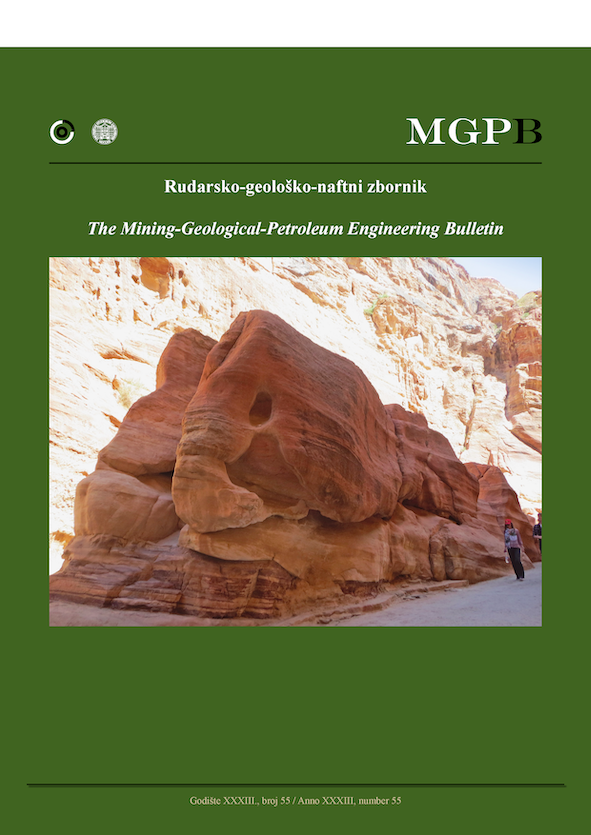The microwave irradiation effect on the floatability of mixed sulphide/oxide copper ores
DOI:
https://doi.org/10.17794/rgn.2021.4.10Keywords:
microwave, flotation, copper oxides and sulphides, iron, pre-treatmentAbstract
Pre-treatment of copper sulphide and oxide ores using microwave radiation causes a difference in their floatability through change in the surface properties of the minerals. The aim of this study is to investigate the behaviour of Sungun porphyry copper ore under the influence of microwave radiation. In this regard, the feed sample of Sungun copper flotation circuit has been subjected to microwave irradiation for 0-120 s and a radiation power of 0-600 W. The prepared samples were then subjected to flotation experiments. According to the results, the grade of sulphide and oxide Cu minerals, as well as the grade of Fe, increased by microwave irradiation in all experiments compared to the non-irradiated samples. At the same time, recovery rate has a reversed trend and decreased in all cases. Variations in the recovery rates of copper oxides and sulphides due to microwave irradiation are different. Increasing the power of irradiation resulted in a greater reduction in the recovery of copper oxides than of sulphides. On the other hand, increasing the power of microwave irradiation reduced the amount of iron recovery in the copper concentrate and with an increase in the duration of microwave irradiation, the reduction of iron recovery values is even more pronounced. Changes in the power and duration of microwave radiation have not had a significant effect on variations in oxide copper grade in flotation tailings. While the grade of sulphides in tailing is affected by the parameters of microwave irradiation and with an increase in power and duration of microwave irradiation, the grade of copper in tailing increases.
Downloads
Published
How to Cite
Issue
Section
License
Copyright (c) 2021 authors and journal

This work is licensed under a Creative Commons Attribution 4.0 International License.
Creative Commons-BY
Authors who publish with this journal agree to the following terms:
In agreeing this form, you certify that:
- You read the ethical codex of the RGN zbornik available at journal web.
- You submitted work is your original work, and has not previously been published and does not include any form of plagiarism.
- You own copyright in the submitted work, and are therefore permitted to assign the licence to publish to RGN zbornik.
- Your submitted work contains no violation of any existing copyright or other third party right or any material of an obscene, libellous or otherwise unlawful nature.
- You have obtained permission for and acknowledged the source of any illustrations, diagrams or other material included in the work of which you are not the copyright owner.
- You have taken due care to ensure the accuracy of the work, and that, to the best of your knowledge, there are no false statements made within it.
- All co-authors of this submitted work are aware of, and in agreement with, the terms of this licence and that the submitted manuscript has been approved by these authors.
Publication licence
You retain copyright in your submitted work, according to journal license policy (CC-BY). By signing this form you agree that RGN zbornik may publish it under the publication licence. In summary the licence allows the following:
Anyone is free:
- To copy, distribute, display, and perform the work.
- To make derivative works.
Under the following conditions:
- The original author must always be given credit.
- The work may not be used for commercial purposes.
- If the work is altered, transformed, or built upon, the resulting work may only be distributed under a licence identical to this one.
Exceptions to the licence
In addition to publishing the work printed under the above licence, RGN zbornik will also enable the work to be visible online.
The journal editorial can change the licence rules anytime but it cannot retroactively restrict author(s) rights.


